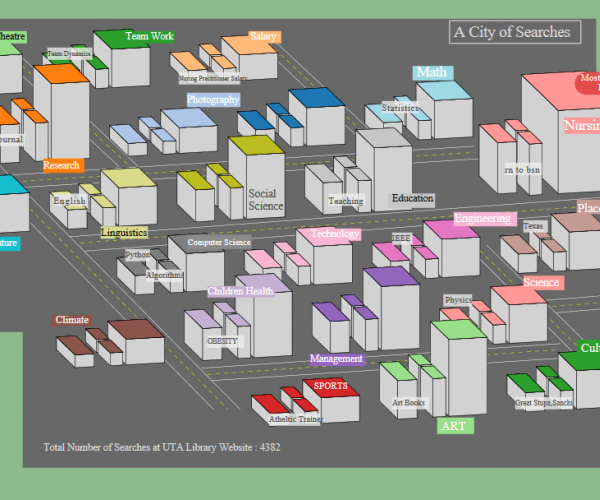
by Heather Scalf


by Heather Scalf
The City of Searches visualization project was inspired by a NISO webinar in September 2018 called Using Analytics to Extract Value from the Library’s Data. Steven Braun from Northeastern University Libraries shared a visualization that he had created to highlight the Libraries' catalog searches for the previous year. Pushyahass Reddy Obulapu, a CSE Masters degree student working as a GRA in Libraries Assessment took on the assignment of developing a visualization for the Summon searches for UTA Libraries for the 2017-18 academic year.
His notes and comments about the project are included below, as well as the resulting visualization.
Data Visualization of Search Terms at UT Arlington Libraries
Add new comment